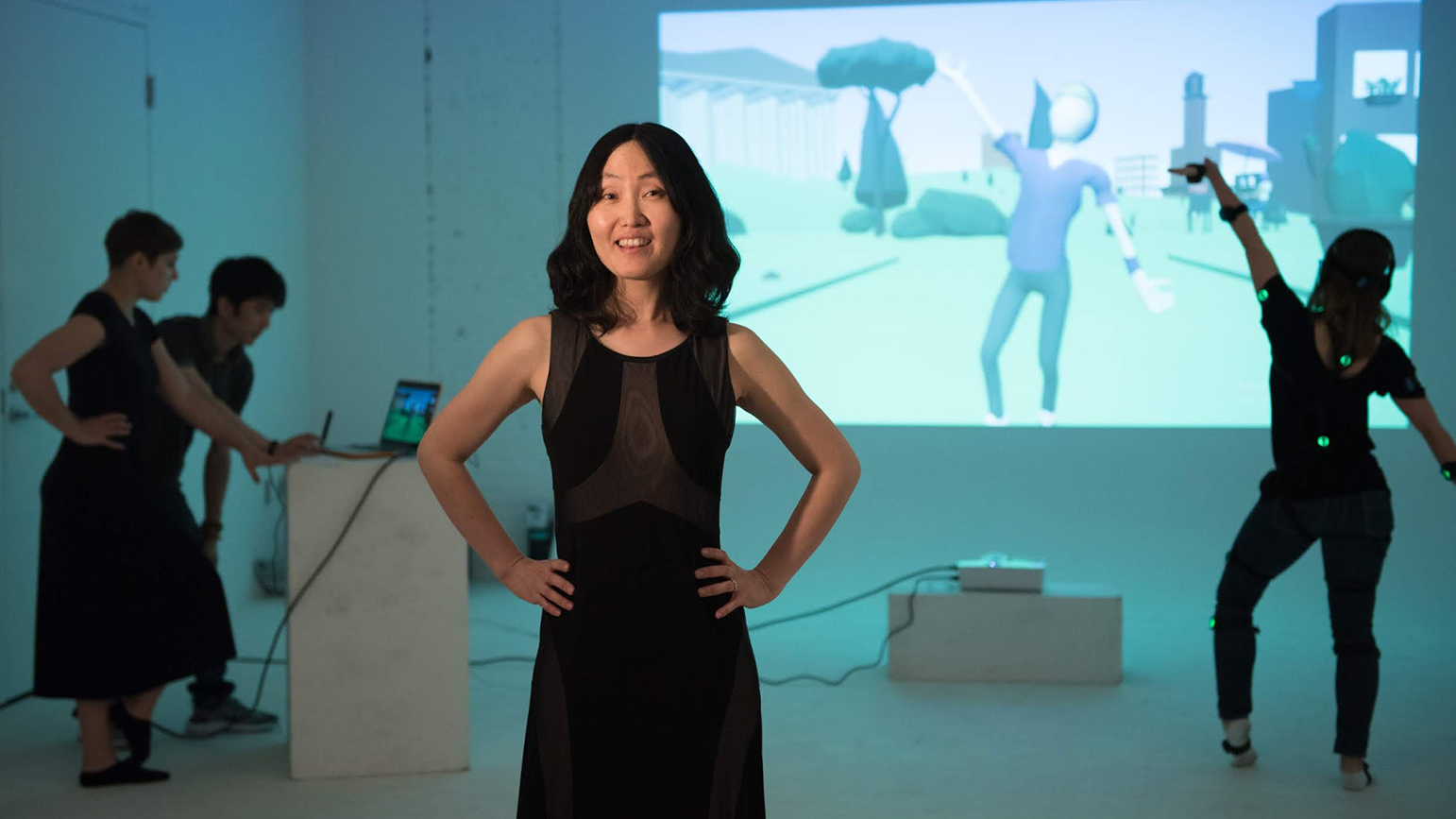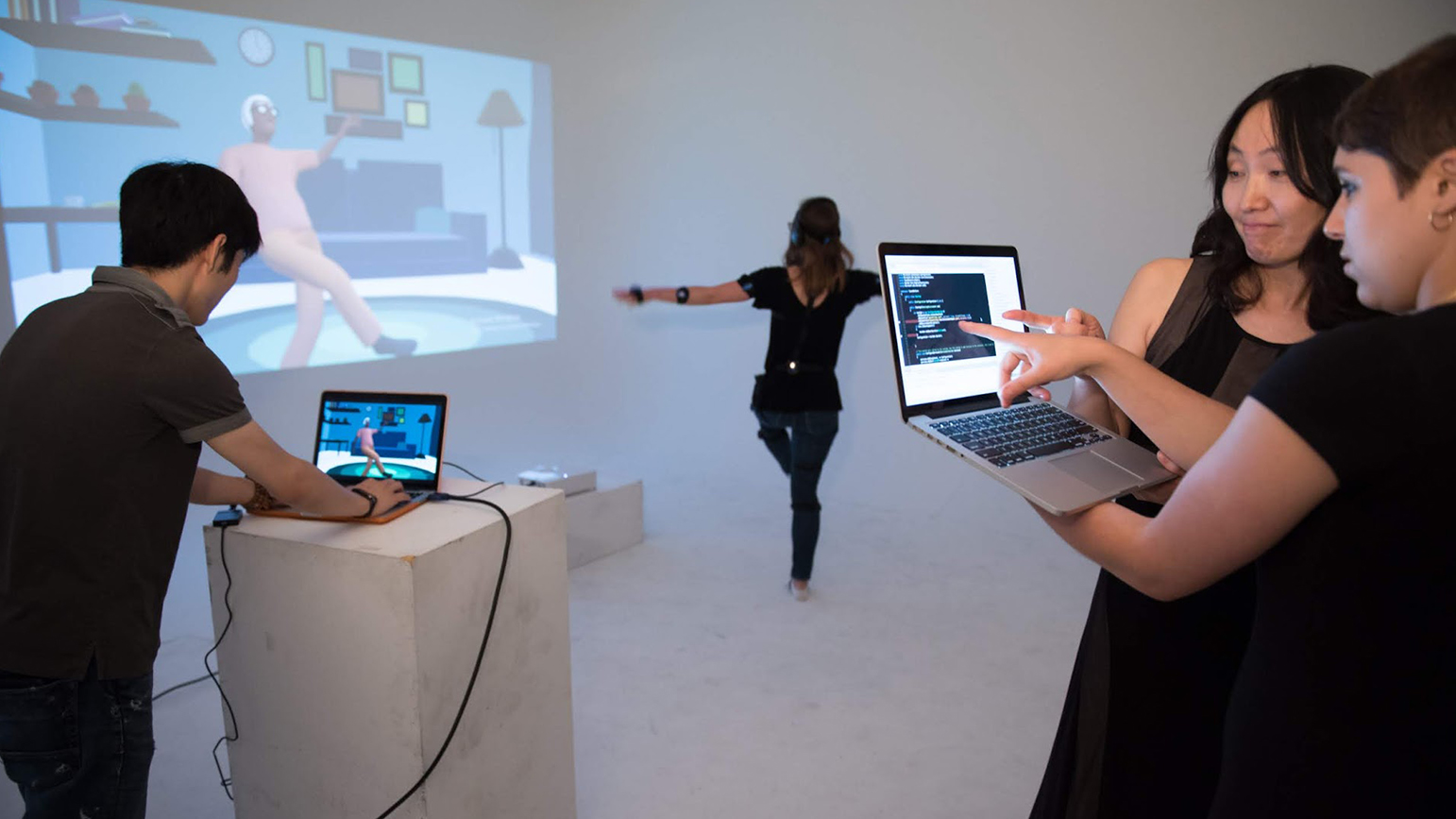
“5 Questions” is an ongoing series with School of Art alumni who are transforming art, culture, and technology, exploring their creative practices, career milestones, and Carnegie Mellon memories.
Through her artistic practice and art-based research, Semi Ryu explores the psychological relationship between physical and virtual bodies, based on Korean rituals and oral storytelling. Ryu is a full professor of Kinetic Imaging at VCU Arts and an associate professor of Internal Medicine, VCU School of Medicine (affiliate). Her recent projects, including “VoicingElder” and “VoicingHan,” harnesses the power to storytelling using new media to enhance elder and palliative care.
Ryu is the winner of Hamilton International Arts in Health Award 2020 (Arts for Innovation) and a nominee for the Vilcek-Gold Award for Humanism in Healthcare 2020. Her animations have screened at festivals around the globe, and her work has been exhibited at the Chelsea Art Museum, New York; Red Gate Gallery, Beijing; Museum of Modern Art, Mexico; and De Balie, Amsterdam; among many others. Ryu is currently a doctoral candidate in Humanities and Communication at UOC, Barcelona.
1
What is the Korean concept Han and how does it play into your work?
The Korean emotional paradox Han is an extreme state of grief, but with a great hope to overcome a seemingly impossible situation. Han is the driving force of the Korean ritual of transformation, often accompanied by the ultimate state of playfulness. Without Han, we cannot process this special mode of ritual.
First, I considered Han as a Korean local concept, but I began to realize that Han can be transcultural and transnational and can be found in the fundamental aspect of human beings. I have tried to find Han in a diverse human psyche, in aging, in the end of life, in mental illness struggles…. For me, Han is not negative; rather, it is a positive energy for transformation, playfulness and potentiality.
In my projects “VoicingElder” and “VoicingHan,” Han plays an important role to process therapeutic storytelling, as the participants felt their Han in different ways. In “VoicingElder,” one of the senior residents talked about her father’s story, ending the story with tears. She never was able to tell this story to anyone, however, through this project, she told it with full emotions using a virtual body, then burst into tears. In “VoicingHan,” a cancer patient talked about his imagined elder self at his 80th birthday party. He tried to challenge his illness in his life storytelling and celebrate the unknown future with many hopes, jumping from Han.
2
How did you become interested in applying art to medical care and research?
For 20 years, I have been investigating the exact same issue: psychological relationship between virtual and physical body. The project has evolved, from media art performance, to arts-based research, and Arts & Medicine. When I first started this inquiry at CMU, it was a very personal and philosophical investigation. At that time, I didn’t think it had anything to do with medical fields. However, the project has since expanded, with constantly emerging questions and curiosity for 20 years, encouraged by amazing people I met on this journey.
I have encountered great computer scientists, anthropologists, social workers, doctors, psychologists, gerontologists, therapists, artists, theorists… who enthusiastically supported my passion about virtual bodies and Korean emotional concept Han. Working in a large public university setting at VCU also gave me opportunities to meet people from diverse fields, get support for art-based research, and collaborate with VCU medicine. As time goes by, I have realized the critical role of Korean ritual is healing, and it is a great model to help patients in healthcare settings, as well as to help underrepresented populations express their voices. When I met the VCU palliative care team at medical school a few years ago, I remember how much excitement we had about the concept of Han as our shared emotion. It has been exciting to see all these connections, and this collaboration still has so much room to learn and grow.

3
Your project “VoicingHan” explores how digital art can support quality of life for cancer patients in palliative care settings. How does interacting with an avatar provide insights or relief from suffering for these patients in a way that other therapies do not?
“VoicingHan” is a life-review storytelling platform for the meaning-making process of lived experience. This process is important for the patient’s quality of life, especially at the end of life, and their stories can be an important family legacy. The primary aspect of “VoicingHan” is to use the body to trigger memory and emotion in the storytelling process. I am exploring “the embodied storytelling” method for alternative forms of psychotherapy, as I believe that our body plays a crucial role in memory and emotion. However, the body has been ignored in psychotherapy with the emphasis of “talk therapy” traditions. I have explored virtual bodies in therapeutic storytelling platforms, using psychological tensions between virtual and physical bodies, via embodied storytelling methods.
Virtual body playfully engaged the participants to act out memories, from childhood to imaginary elderhood-future self. The VoicingHan life-review also promotes the self-healing process in “person centered care” where the participants can have full agency to tell their stories with very little prompts. The power of healing can be maximized by free agency and autonomy of individuals, performing virtual bodies.
4
Could you talk a bit about your time as a grad student at CMU’s School of Art? Are there any experiences you had as a student that stand out?
The emphasis on community engagement at CMU School of Art hugely impacted my work at graduate school and beyond, and I forever appreciate CMU.
The first time being in America, I had many problems with English communication, and It was a tremendous challenge for me to interact and engage with people and community. However, being encouraged by my dear professors and classmates, I chose to be a storyteller, telling and listening to stories in the field and following the spirit of the Korean oral storytelling tradition.
It was not easy to ask individuals to listen to my traditional Korean story which took about 20 minutes. Unfolding a Korean fan, I tried my best to deliver the story playfully, and when the story ended, I asked my listeners to tell the story back to me, using my fan. During the storytelling, I was fascinated by the interactive sound of “U-hmm”. It was so musical and beautiful, and gave me the courage to stay in conversation and continue the stories. This process created an open cross-cultural space where I could freely communicate or miscommunicate. I really enjoyed how the stories were transformed by mouth, informed by different cultural backgrounds and memories. This storytelling process and community engagement has been the main spirit of all my projects since then.
5
Do you have any advice to share with students?
I have advice for international students dealing with language issues. The language problem was hard but it gave me tremendous opportunities for growth. It allowed me to contemplate important issues that I never thought about before, desperately asking questions about communication, self and identity.
Another thing was immersion in writing. Because I couldn’t speak English well, I chose to write instead. I proactively used writing as my communication tool, through emails, essays, notes…. Eventually, I collected all my writings and structured them as a part of my thesis. My thesis “Ritualizing Interactive Media, from motivation to activation” became my first writing, filled with my personal, theoretical and cross-cultural investigations. Since then, I have continued to write, and have published many pieces.
All photographs by Steven Casanova




